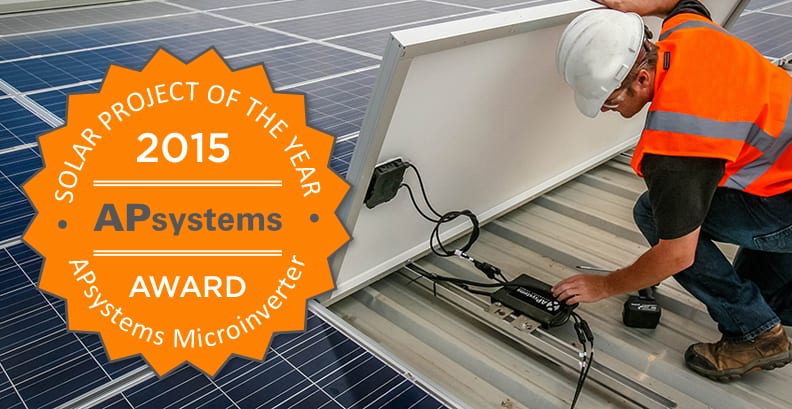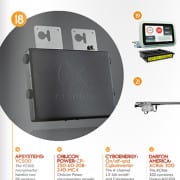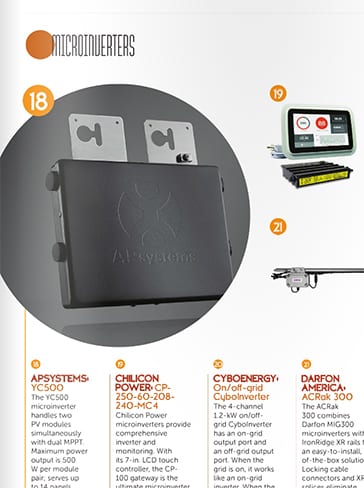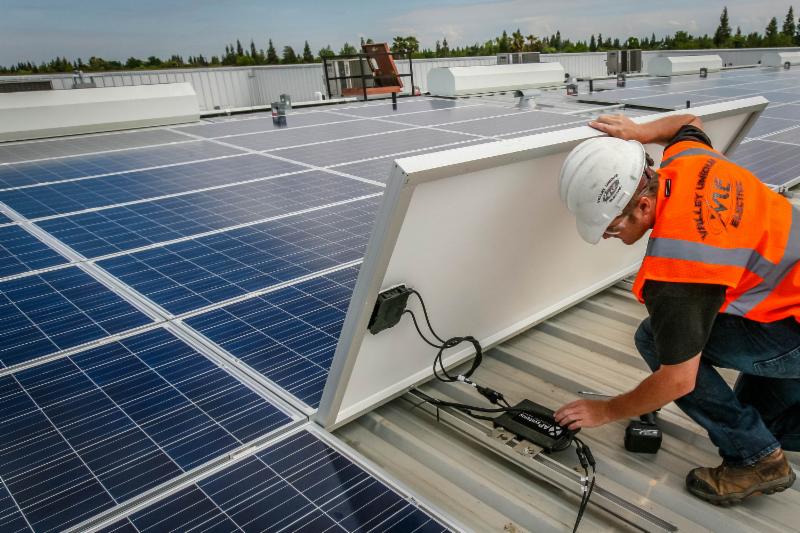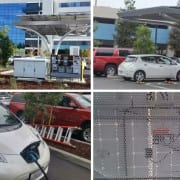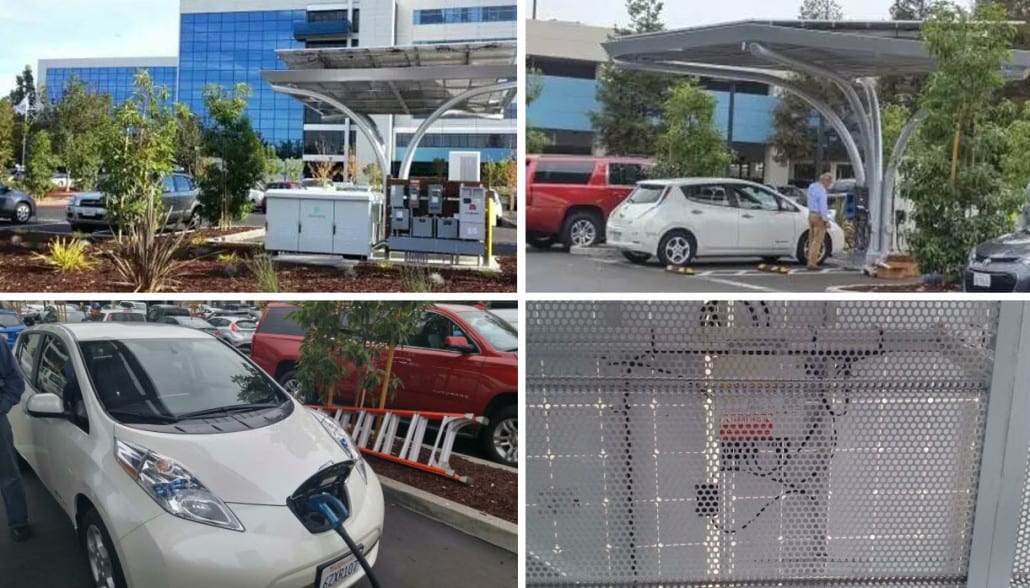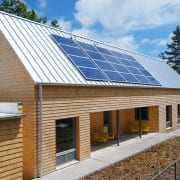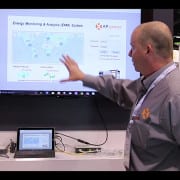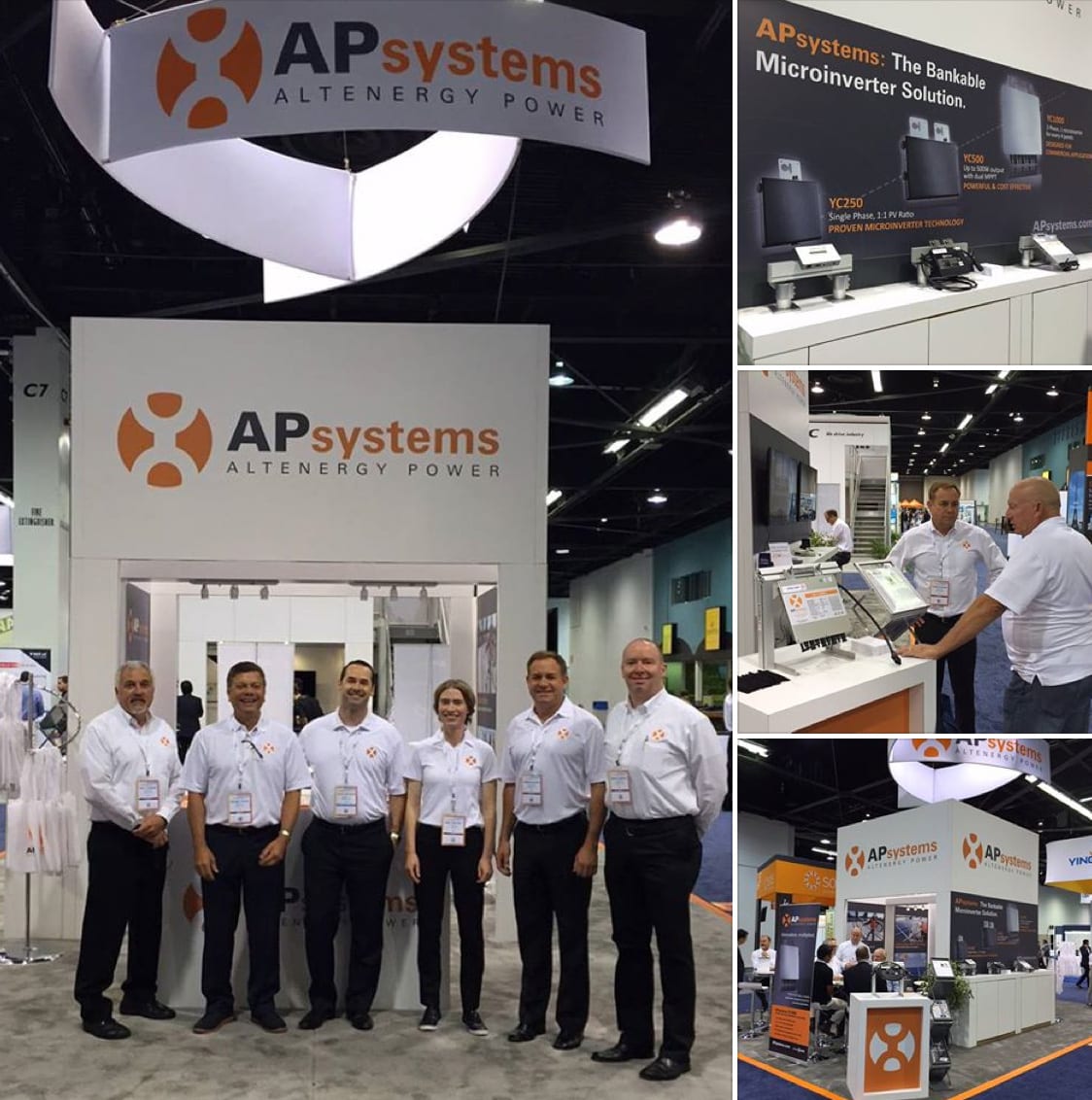Powering old homes with solar is only half the renewable-energy equation.
Designing and building new homes that make the most of that renewable power – achieving ultra-efficient “Net Zero” construction, and beyond – is the next frontier for sustainable living.
Graduate students in the University of Kansas Department of Architecture, Design and Planning are pushing construction into the future through Studio 804, a nonprofit organization that tests their drafting-board skills against real-world challenges.
Where conventional construction ends, the Studio 804 program begins.
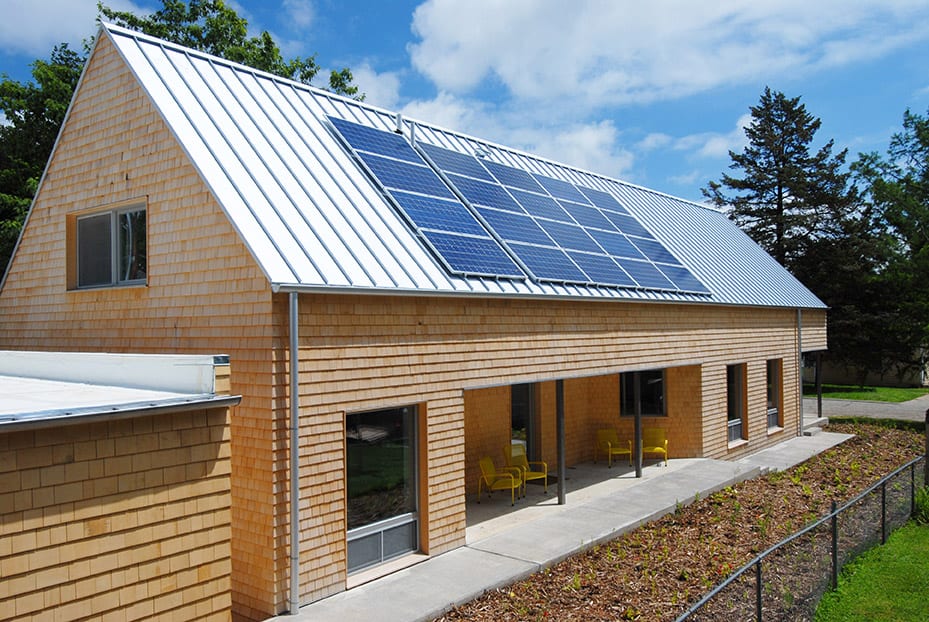
“If a group full of students who have never worked construction or designed and built a project can accomplish these highly sustainable buildings, it shows what the industry as a whole should be capable of,” said Taylor Pickman, now in his fifth and final year in the colloquially known “M-Arch” program. “We like to think we’re setting an example in that sense.”
Their most recent success: the East Lawrence Passive House, an innovative solar home set among the tree-lined streets of a quintessential college town, a mix of modest historic homes, and even the mansions of nineteenth century industrial tycoons.
Outside, the home was designed to fit in with the scale and aesthetics of the neighborhood, while maximizing square footage on a prominent but narrow corner lot. Cut-cedar siding offers a look familiar to the neighborhood while carrying a low carbon footprint. Generous windows maximize passive solar potential.
Inside, the home boasts a laundry list of energy-saving features. A triple-thick blanket of insulation achieves dramatic “R” values, while an advanced air barrier wrap further reduces heat loss. A low-energy HVAC system and energy-recovery ventilator supplies fresh air without energy waste, while the plumbing includes an insulated hot-water recirculation system for more efficiency still.
The home meets the rigorous standards of the LEED Platinum, Net Zero and Passive House certification programs – a trifecta for sustainable construction.
Net Zero, for instance, requires that all heating, cooling and electrical needs must be met through energy-conserving design features and onsite renewable sources.
That’s where solar comes in. The East Lawrence home features a 6kW rooftop system powered by 20 Trina modules and 10 APsystems YC500 dual-module microinverters.
Studio 804 students approached APsystems for help with the project, and the Seattle-based solar technology company offered the microinverter units as a donation.
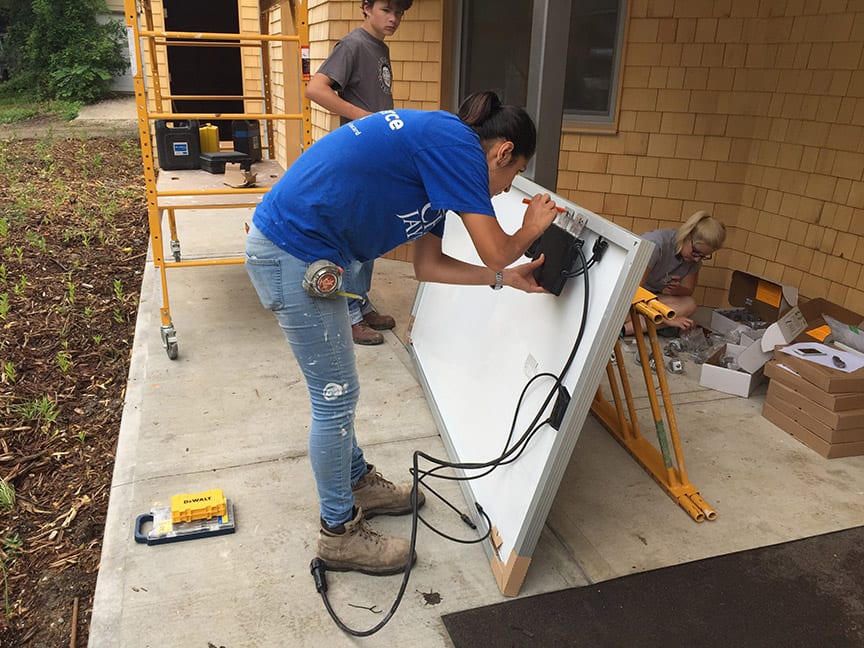
“These students are really leading the way forward for energy-efficient design and construction,” said Thomas Nelson, APsystems vice president for sales, USA. “As a leader in innovative solar technology, we were glad to sign on to the project and be included in this showcase home.”
Pickman said microinverters represent “a huge innovation” in the solar field, helping students meet their project goals even without real experience as solar installers.
“I have to say that those microinverters were very simple to install, very simple to work with and very simple to use,” Pickman said. “We had more trouble getting the panels up onto the roof than we ever did working with the micro inverters.”
Bigger, more ambitious projects
KU’s Studio 804 program is committed to the research and development of sustainable, affordable, and inventive building solutions, from the standards of human comfort to the nature of urban spaces.
Two education tracks are offered: a three-year Master of Architecture program for students who already hold undergraduate degrees, or a five-year program that melds both undergraduate and graduate studies and also culminates in the master’s degree.
The final year is a rigorous practicum in which students tackle all aspects of design and construction: from site selection to negotiating building and zoning codes, to working with neighborhood associations and project engineers, to pouring concrete and pounding nails.
“A lot of our projects are speculative, so we are also in charge of making sure the project gets sold,” Pickman said.
To date the studio has completed seven LEED Platinum buildings and two with Passive House certification, meeting the most rigorous environmental standards for materials and construction.
Solar has become a regular feature of Studio 804 work, Pickman said, because it is one of the most effective means of achieving onsite energy production in the Midwest.
“Solar is relatively simple and it functions relatively well with different housing configurations,” he said. “And every year the technology gets better, so every year, we can demonstrate that technology as well.”
Studio 804 produces one building per year, and they keep getting more ambitious.
Twenty years ago, the first Studio 804 project put a simple metal roof over a historic farmhouse. Two years ago, students designed and built a lecture hall and auditorium addition to Marvin Hall, a treasured, 1908-vintage engineering building on the University of Kansas campus.

Pickman said their next challenge may be achieving the WELL Building standard, which considers interior design and the ergonomics of the living spaces and fixtures – anything that will “reduce wear and tear on the human body.”
“Every year we set slightly different goals,” Pickman said, from building scale to advanced materials and construction and renewable energy techniques.
“And great architecture, or at least very good architecture,” he added. “There’s not a lot of it in Kansas.”
East Lawrence Passive House
East Lawrence, Kansas
Designer/installer: Studio 804, graduate students in the University of Kansas Department of Architecture, Design and Planning
System output: 6kW
No. of modules: 20
Module type: Trina TSM-290
Microinverters: APsystems YC500 dual-module
No. of microinverters: 10
croinverters: 10

